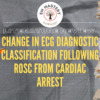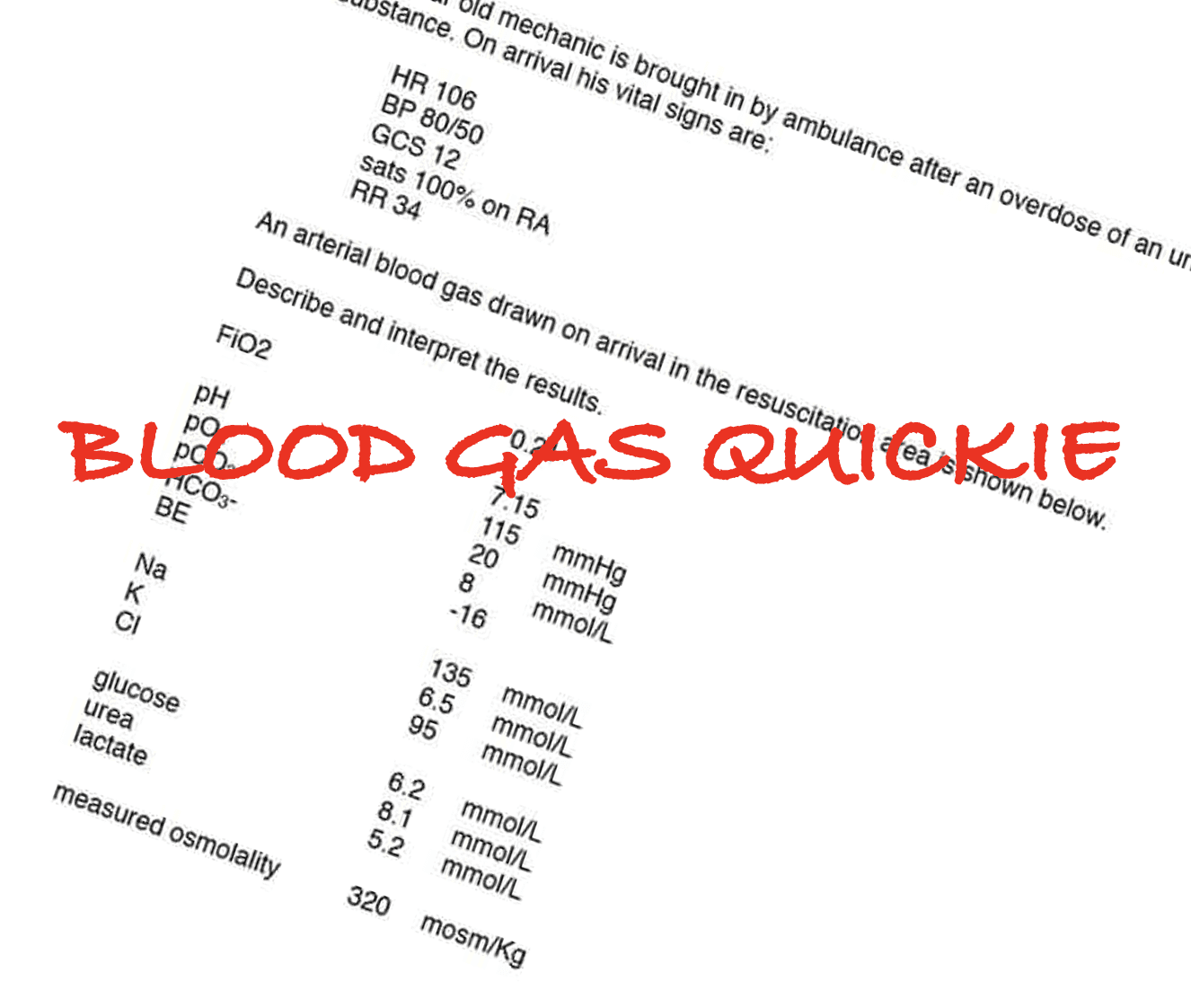A 68 yo woman with known COPD, on home oxygen, presents a little drowsy. Her initial Co2 on venous gases was 84mmHg. She is placed on a short course of CPAP and is soon sitting out of bed eating sandwiches. The medical registrar looks at the venous gases and doesn’t want to take the patient to the ward because of the CO2. What do you think?
pH 7.25
pCO2 74 mmHg
pO2 17 mmHg
HCO3 33 mmol/L
Solving gases like this is relatively simple.
FIRST THING TO SAY IS: This patient should not be going to ICU anyway, as she is on home oxygen. The only question to ask is; is she OKAY to leave the ED and go to the ward?
I say yes! My suspicion in this patient, is that she normally is compensated for a high CO2. Lets see if that is correct.
Using the 7 Step System for gas interpretation( we only need the first 2 steps here):
Step 1: Acidosis or Alkalosis?
What is it due to primarily? Given that the CO2 is very raised in comparison to the HCO3, this is a RESPIRATORY ACIDOSIS
Step 2: Is there adequate compensation?
In the acute phase we would expect the HCO3 to increase by 1 mmol/L for every 10mmHg rise in CO2(above 45)
Let’s take the baseline of the HCO3 as 24 we know that CO2 has risen by 29- lets say 30mmHg.
In acute compensation the HCO3 would be expected to be 24(baseline to use) + (3 x 1) = 27
In chronic compensation we would expect the HCO3 to increase by 3mmol/L for every 10mmHg increase in CO2
Therefore the HCO3 would increase by 24 + (3 x 3) =33
The bicarb is in fact 33mmol/L. This indicates that this patient may normally be sitting at around this CO2 level. That’s why she is sitting out of bed, looking better and eating sandwiches. She can go to the ward.










VBG: Elderly COPD patient with raised CO2 – Resus
vwhrprtmkx http://www.gmrw2q37hgij9xj3367626k9lb761m0ts.org/
avwhrprtmkx
[url=http://www.gmrw2q37hgij9xj3367626k9lb761m0ts.org/]uvwhrprtmkx[/url]